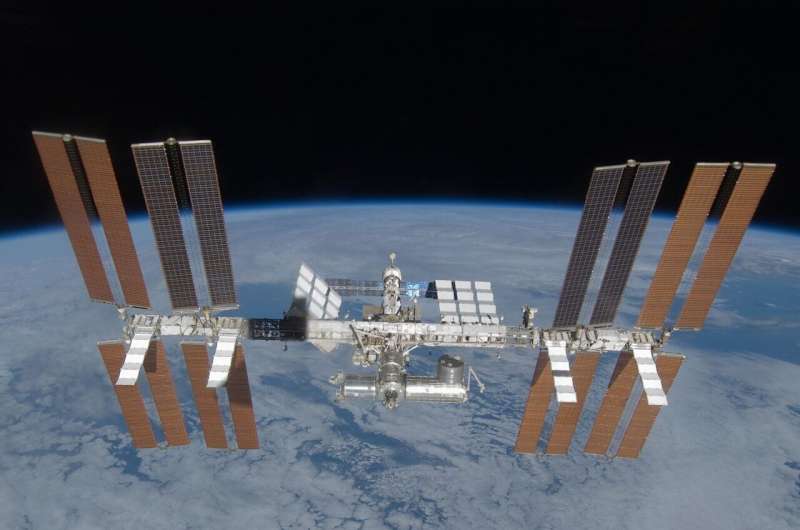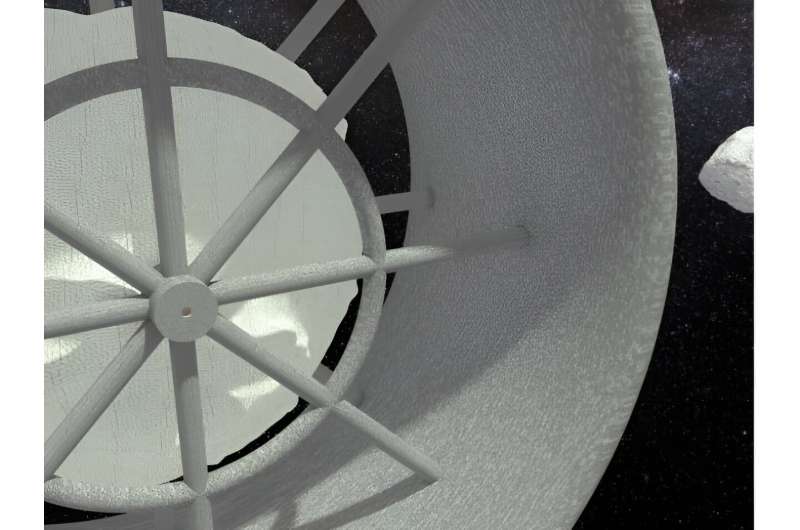
Copernical Team
The Universe in a box: preparing for Euclid’s survey
 Video:
00:03:31
Video:
00:03:31
ESA’s Euclid mission will create a 3D-map of the Universe that scientists will use to measure the properties of dark energy and dark matter and uncover the nature of these mysterious components. The map will contain a vast amount of data, it will cover more than a third of the sky and its third dimension will represent time spanning 10 billion years of cosmic history.
But dealing with the huge and detailed set of novel data that Euclid observations will produce is not an easy task. To prepare for this, scientists in the Euclid Consortium have
Chemical contamination on International Space Station is out of this world, study shows

Concentrations of potentially harmful chemical compounds in dust collected from air filtration systems on the International Space Station (ISS) exceed those found in floor dust from many American homes, a new study reveals.
In the first study of its kind, scientists analyzed a sample of dust from air filters within the ISS and found levels of organic contaminants which were higher than the median values found in US and Western European homes.
Publishing their results in Environmental Science & Technology Letters, researchers from the University of Birmingham, UK, as well as the NASA Glenn Research Center, U.S., say their findings could guide the design and construction of future spacecraft.
Contaminants found in the "space dust" included polybrominated diphenyl ethers (PBDEs), hexabromocyclododecane (HBCDD), "novel" brominated flame retardants (BFRs), organophosphate esters (OPEs), polycyclic aromatic hydrocarbons (PAH), perfluoroalkyl substances (PFAS), and polychlorinated biphenyls (PCBs).
BFRs and OPEs are used in many countries to meet fire safety regulations in consumer and commercial applications like electrical and electronic equipment, building insulation, furniture fabrics and foams.
PAH are present in hydrocarbon fuels and emitted from combustion processes, PCBs were used in building and window sealants and in electrical equipment as dielectric fluids, while PFAS have been used in applications like stain proofing agents for fabrics and clothing.
NASA may delay crewed lunar landing beyond Artemis 3 mission
 NASA's Artemis 3 mission, set to return humans to the Moon in 2025, might not involve a crewed landing after all, an official said Tuesday.
Jim Free, the space agency's associate administrator for the Exploration Systems Development Mission Directorate, told reporters in a briefing that certain key elements would have to be in place - notably the landing system that is being developed by Sp
NASA's Artemis 3 mission, set to return humans to the Moon in 2025, might not involve a crewed landing after all, an official said Tuesday.
Jim Free, the space agency's associate administrator for the Exploration Systems Development Mission Directorate, told reporters in a briefing that certain key elements would have to be in place - notably the landing system that is being developed by Sp Artemis II crew inspect Orion capsule with media in tow
 Earlier today, journalists from all over the world got to meet the Artemis II Crew and their Orion Crew Module, which will send them on a journey around the Moon and back to earth no earlier than November 2024.
Displayed inside the Neil Armstrong Operations and Checkout Building (O&C) at NASA's Kennedy Space Center in Florida are the Orion Crew Modules for Artemis II, Artemis III, Artemis
Earlier today, journalists from all over the world got to meet the Artemis II Crew and their Orion Crew Module, which will send them on a journey around the Moon and back to earth no earlier than November 2024.
Displayed inside the Neil Armstrong Operations and Checkout Building (O&C) at NASA's Kennedy Space Center in Florida are the Orion Crew Modules for Artemis II, Artemis III, Artemis NASA's Ingenuity Mars helicopter flies again after unscheduled landing

NASA's Ingenuity Mars Helicopter successfully completed its 54th flight on Aug. 3, the first flight since the helicopter cut its July 22 flight short. The 25-second up-and-down hop provided data that could help the Ingenuity team determine why its 53rd flight ended early.
Flight 53 was planned as a 136-second scouting flight dedicated to collecting imagery of the planet's surface for the Perseverance Mars rover science team.
How to change an asteroid into a space habitat, in just 12 years

The basic idea of turning an asteroid into a rotating space habitat has existed for a while. Despite that, it's always seemed relatively far off regarding technologies, so the concept hasn't received much attention over the years. But, if you're retired and have an underlying interest in researching space habitats, developing a detailed plan for turning an asteroid into one seems like a great use of time.
And that is precisely what David W. Jensen, a retired Technical Fellow at Rockwell Collins, recently did. He released a 65-page paper on the arXiv preprint server that details an easy-to-understand, relatively inexpensive, and feasible plan to turn an asteroid into a space habitat.
What happens if someone dies beyond Earth
 There's no question that sending human beings to space is an extraordinarily difficult and perilous proposition. Since human space exploration began just over 60 years ago, 20 people have died - 14 in the NASA space shuttle tragedies of 1986 and 2003, three cosmonauts during the 1971 Soyuz 11 mission, and three astronauts in the Apollo 1 launch pad fire in 1967.
Given how complicated human
There's no question that sending human beings to space is an extraordinarily difficult and perilous proposition. Since human space exploration began just over 60 years ago, 20 people have died - 14 in the NASA space shuttle tragedies of 1986 and 2003, three cosmonauts during the 1971 Soyuz 11 mission, and three astronauts in the Apollo 1 launch pad fire in 1967.
Given how complicated human Scientists reveal blueprint of China's lunar water-ice probe mission
 Chinese space scientists have revealed in a paper how the country's lunar probe Chang'e-7, supported by a hopping detector, may go about investigating the water-ice in the shadow pit near the south pole of the moon.
China plans to launch the Chang'e-6 to land on the moon in around 2024 to collect samples from the far side of the moon, before sending the Chang'e-7 probe around 2026 to imple
Chinese space scientists have revealed in a paper how the country's lunar probe Chang'e-7, supported by a hopping detector, may go about investigating the water-ice in the shadow pit near the south pole of the moon.
China plans to launch the Chang'e-6 to land on the moon in around 2024 to collect samples from the far side of the moon, before sending the Chang'e-7 probe around 2026 to imple Solestial's Tech to Power Atomos's OTVs
NASA data helps Bangladeshi farmers save water, money, energy
 With nearly 170 million residents, Bangladesh is one of the most densely populated nations in the world. Nearly half of its residents work on or live around farms, and rice crops are critical to feeding that population.
So when researchers from the University of Washington and Bangladesh's Ministry of Agriculture joined forces to use data from NASA and its partners to help the country's ri
With nearly 170 million residents, Bangladesh is one of the most densely populated nations in the world. Nearly half of its residents work on or live around farms, and rice crops are critical to feeding that population.
So when researchers from the University of Washington and Bangladesh's Ministry of Agriculture joined forces to use data from NASA and its partners to help the country's ri 